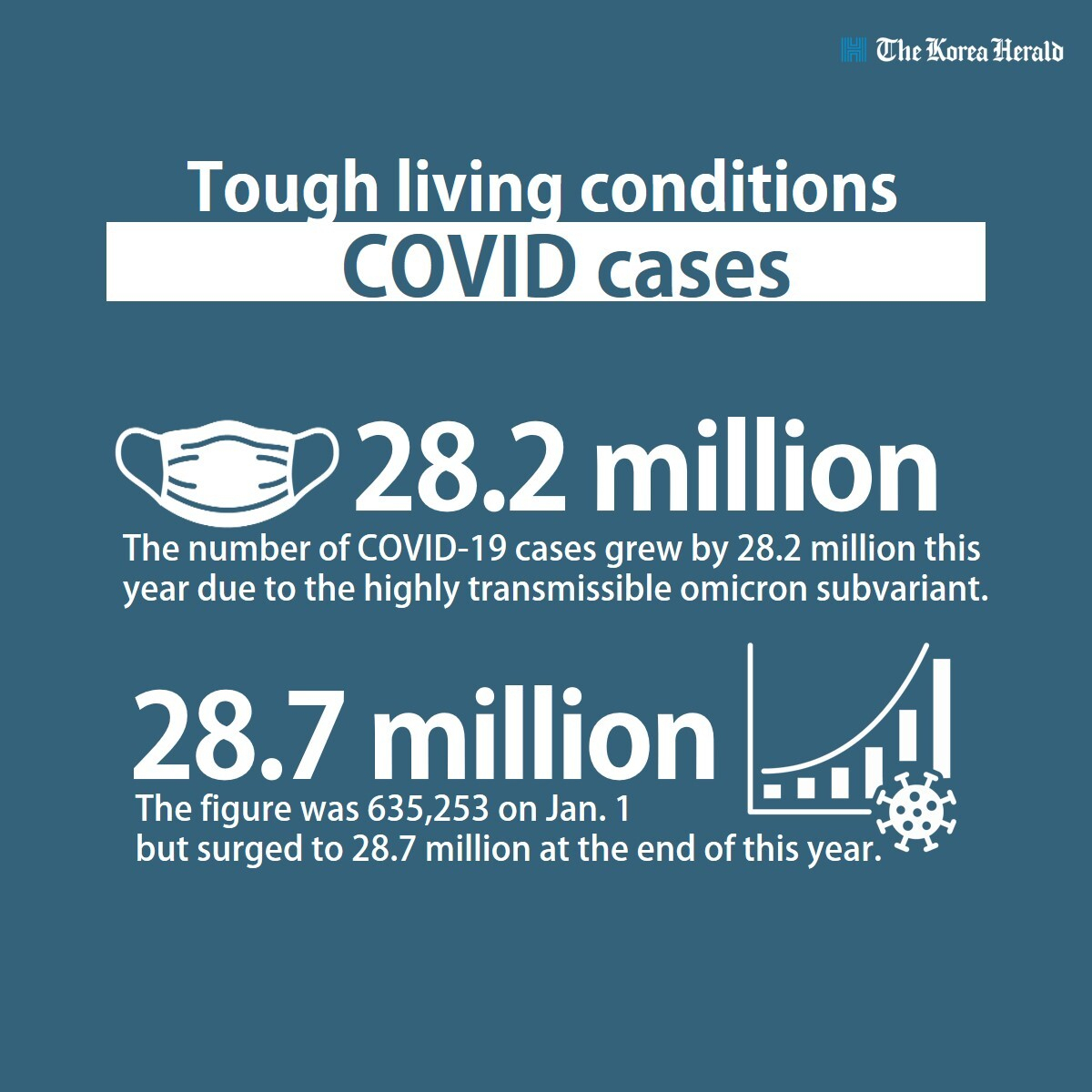 |
(Yu Soo-in / The Korea Herald) |
1. Tough living conditions
① COVID cases
The number of COVID-19 cases grew by 28.2 million this year due to the highly transmissible omicron subvariant. The figure was 635,253 on Jan. 1 but surged to 28.7 million at the end of this year.
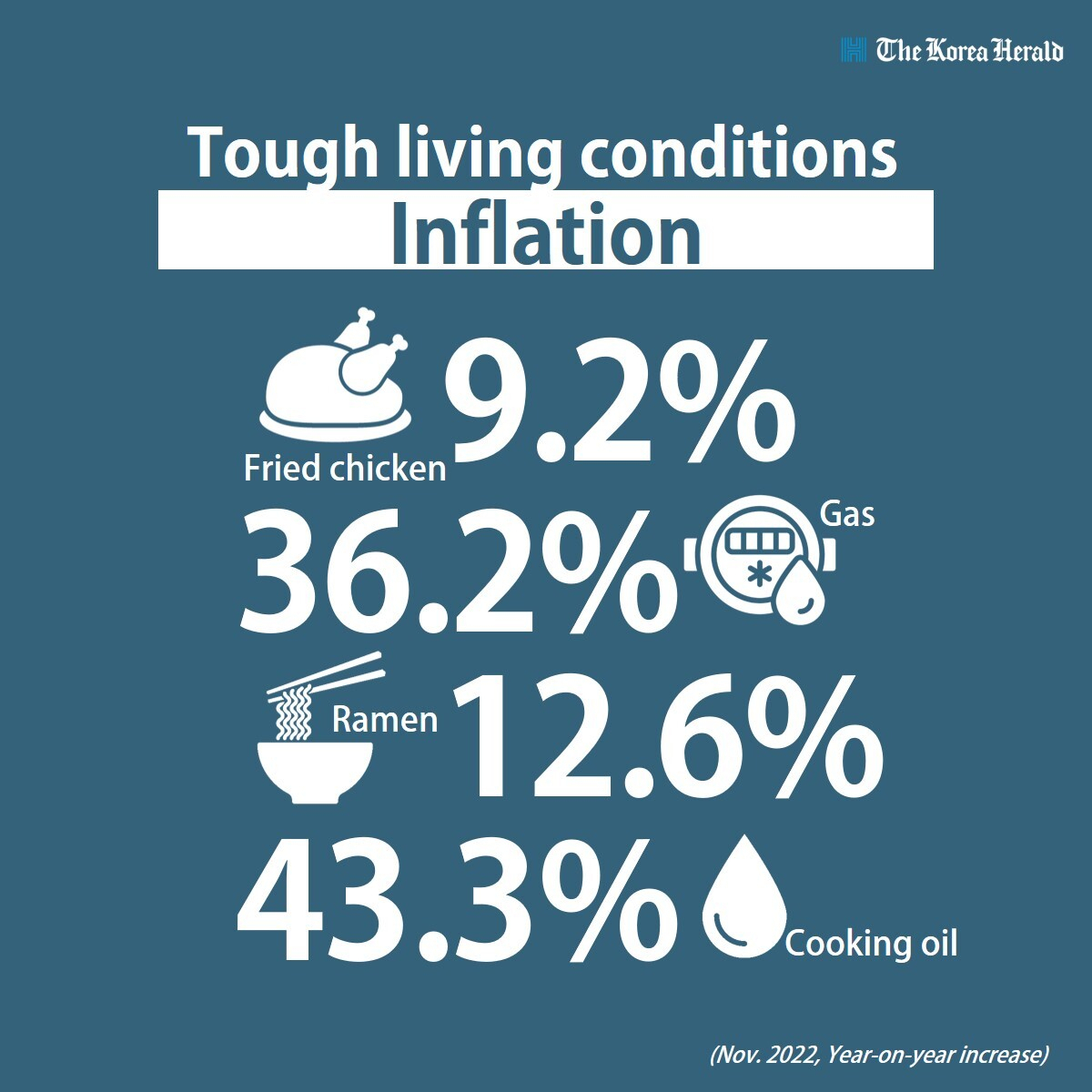 |
(Yu Soo-in / The Korea Herald) |
② Inflation
Fried chicken: 9.2%
Gas: 36.2%
Ramen: 12.6%
Cooking oil: 43.3%
(Nov. 2022, Year-on-year increase)
South Korea has been no exception to global inflation, with “everything has risen except my salary” becoming a popular catchphrase.
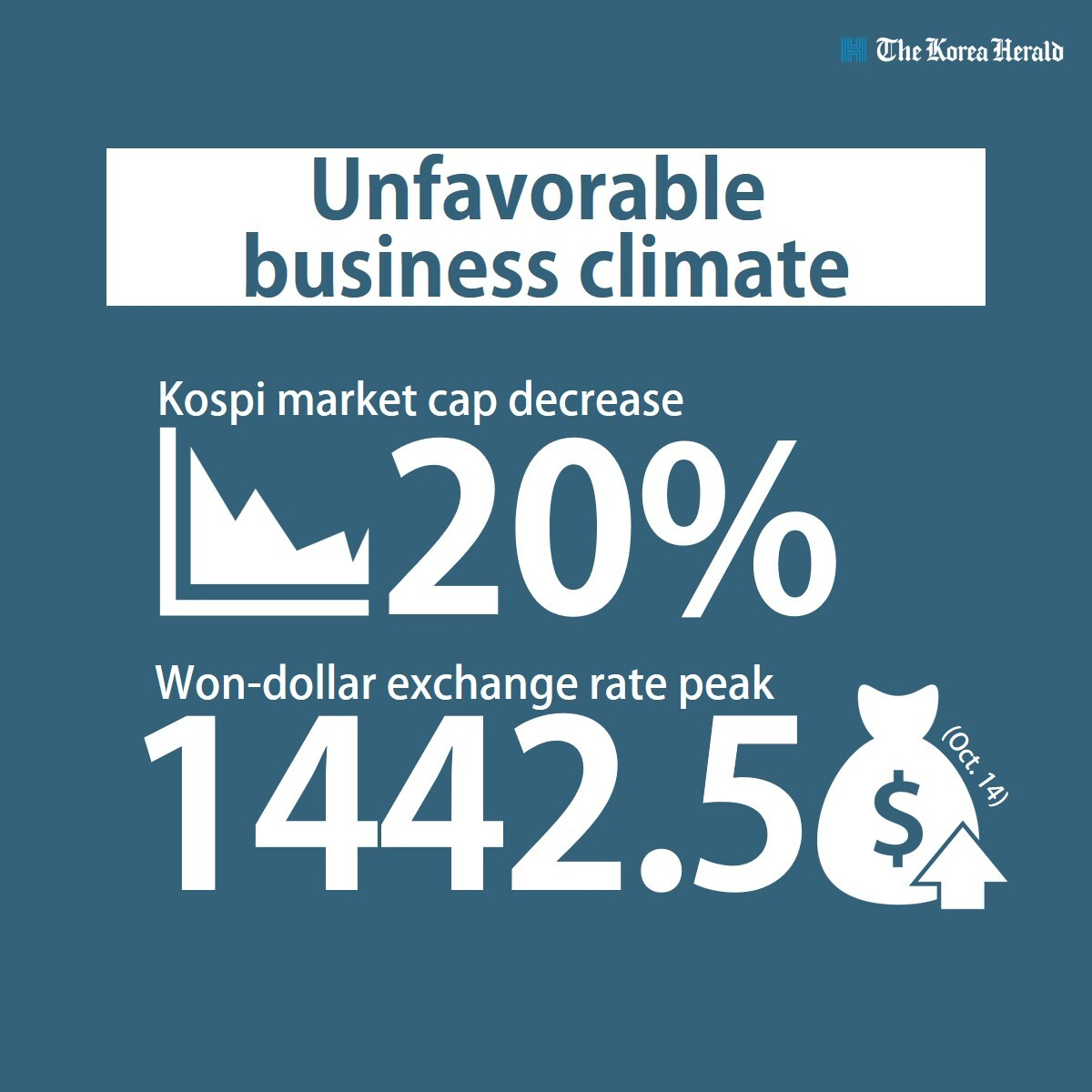 |
(Yu Soo-in / The Korea Herald) |
2. Unfavorable business climate
① Kospi market cap decrease: 20 percent
The South Korean stock market has shrunk by 20 percent since January. Even the country's top 10 conglomerates saw 145 trillion won ($114.4 billion) erased in their total stock value during the period.
The benchmark Korea Composite Stock Price Index also fell by 22 percent in a year from Jan. 3, the worst among G-20 member countries, bar Russia, who is under sanctions by the US and EU.
② Won-dollar exchange rate peak: 1,442.50 (Oct. 14)
The value of the Korean won against the US dollar plummeted to a 13-year low in October, weighing on manufacturers who have been suffering from soaring raw material prices due to the war in Ukraine.
The local currency hit over 1,200 won per dollar in January, went beyond 1,400 and returned to 1,271 as of Dec. 27.
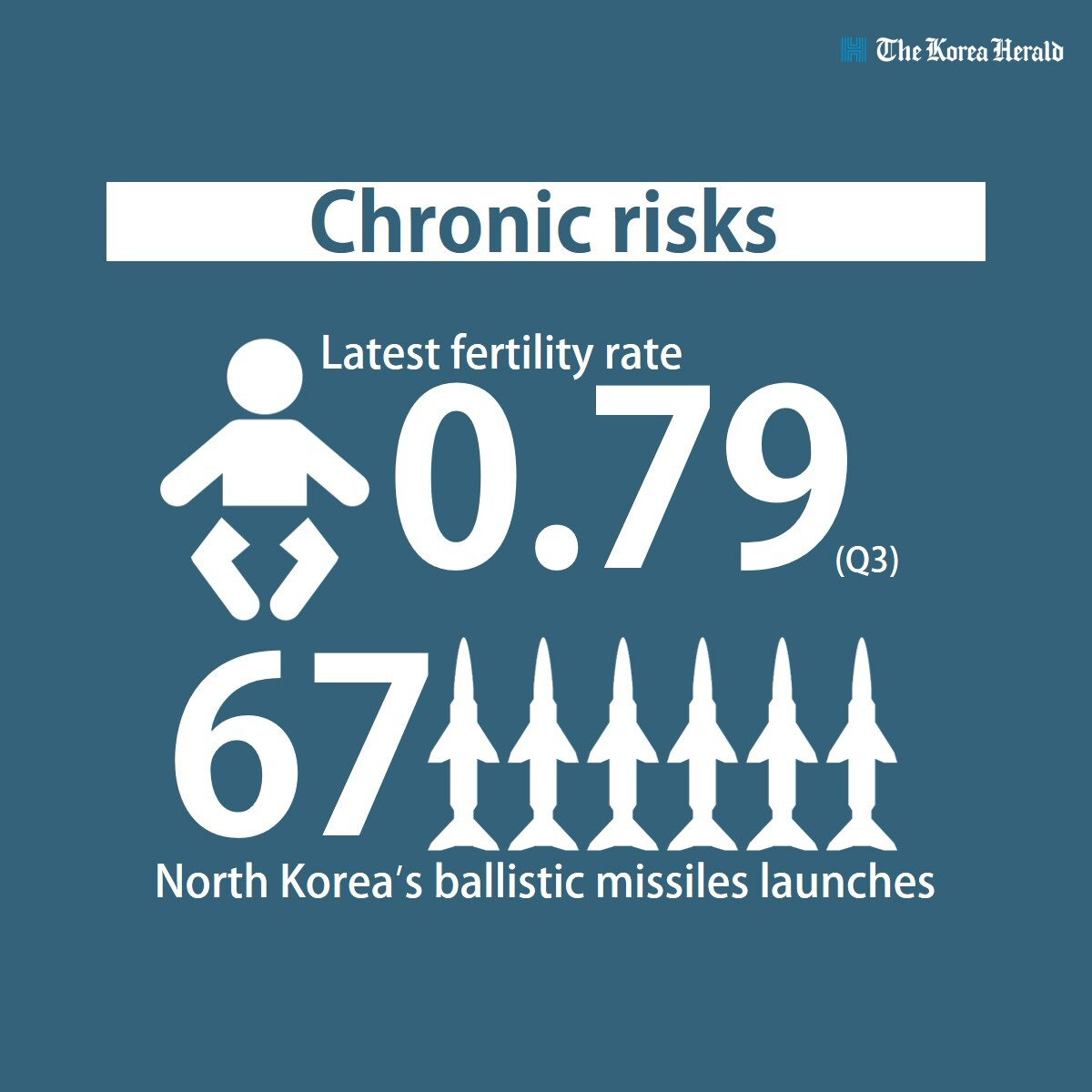 |
(Yu Soo-in / The Korea Herald) |
3. Chronic risks
① Latest fertility rate: 0.79 (Q3)
Despite the government’s vow to focus on South Korea’s demographic crisis, the fertility rate has shown no signs of rebounding in 2022. South Korea’s fertility rate marked a record low in the third quarter of 2022, while its population has been on the decrease for years.
② North Korea's ballistic missile launches: 67
Tension on the Korean Peninsula heightened this year with North Korea carrying out a string of provocations.
North Korea launched 67 ballistic missiles as of Dec. 27, which is more than the number of missiles launched altogether during the previous nine years of Kim Jong-un's 10-year rule.
North Korea’s missile spending could reach 689 billion won ($530 million), according to an estimate by the Korea Institute for Defense Analyses on Dec. 17. The amount is comparable to Seoul’s 2021 budget covering free lunches for its 800,000 students.
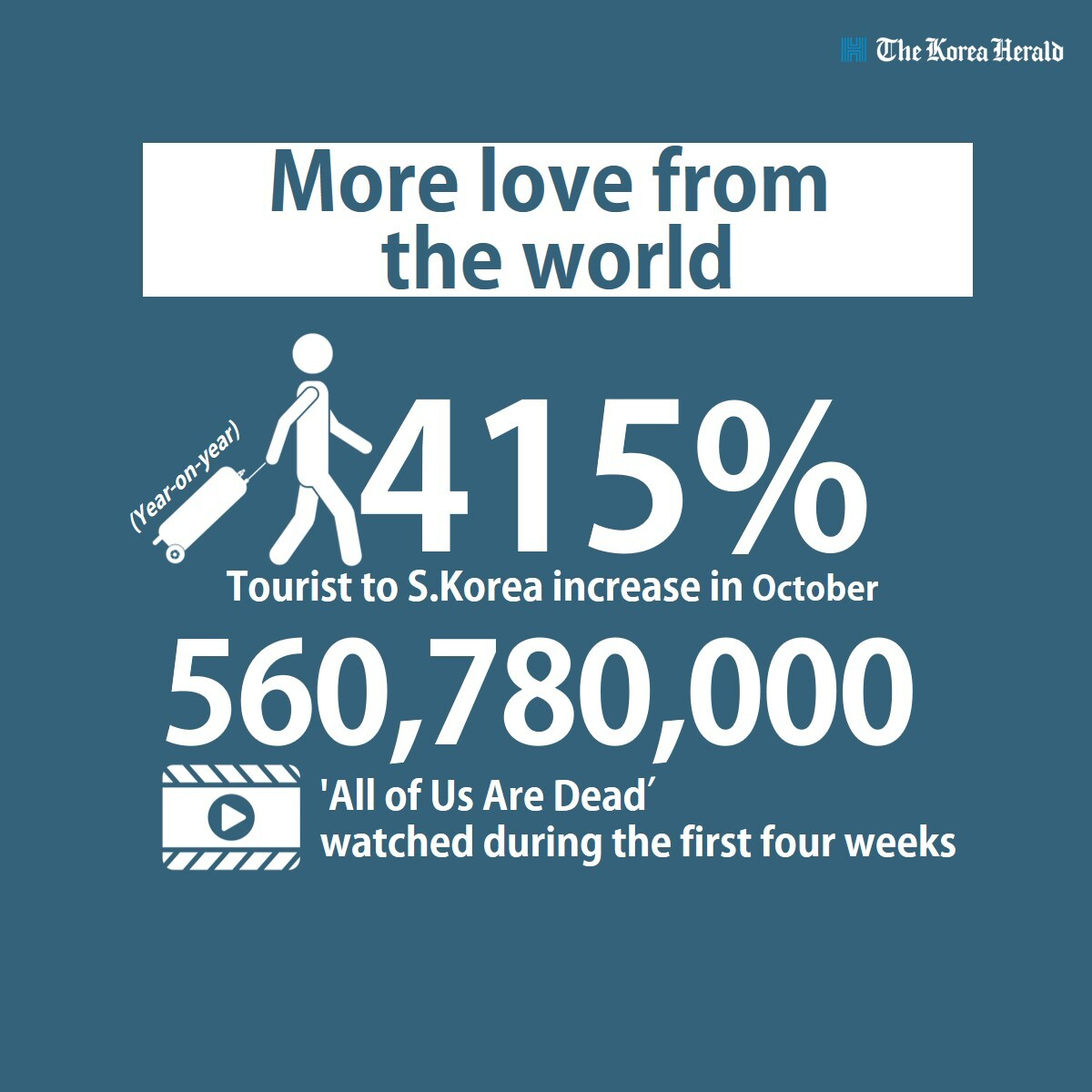 |
(Yu Soo-in / The Korea Herald) |
4. More love from the world
① Year-on-year increase of tourists to South Korea in October: 415 percent
As South Korea phased out COVID-19 travel restrictions, more people visited Korea than the previous year. The number of tourists to the country has continuously grown since March, reaching 476,000 in October, quadruple the figure from October 2021.
② “All of Us Are Dead” hours watched during the first four weeks: 560,780,000
This year, Korean pop culture has continued its spread around the world. As well as other types of cultural content, Korean drama series have garnered great love from global fans.
Zombie thriller “All of Us Are Dead” is one of the shows that took the world by storm. The series, which made it to Netflix's Top 10 list in 93 countries, was viewed for 560 million hours in the four weeks since the show dropped in January.







